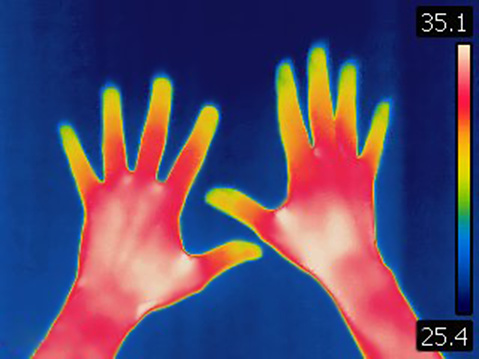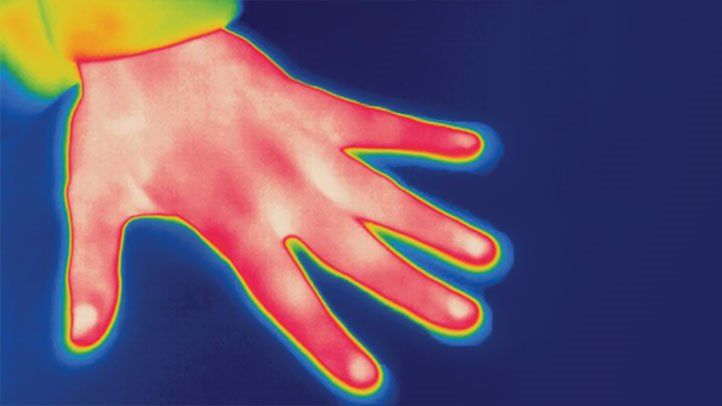Rheumatoid arthritis cannot be diagnosed with a single test. Traditionally, a number of tests, including blood and imaging, have been used to diagnose rheumatoid arthritis (RA), an autoimmune disease in which the body’s immune system attacks the lining of the joints.
A study in the Turkish Journal of Physical Medicine and Rehabilitation, however, found that participants with inflammatory arthritis of the spine (spondylitis) who received infrared light treatment reported increased function and better quality of life.
But how does red light therapy for joint conditions work scientifically? Can IR light treat arthritis? Since the late 1980s, red light and near-infrared have been used in the clinical treatment of arthritis. Numerous clinical studies have been conducted to establish the parameters of effectiveness. It has been recommended for all arthritis sufferers regardless of the cause or severity after more than 40 years of research. For more details, please keep reading.
Why Do Joint Pains Occur? What Are Joints?
The vital components of our body that connect our bones and allow for movement are our joints. They can become painful and lose range of motion when they are injured or strained. The knees, shoulders, and hips are the joints where people most frequently feel pain and discomfort. Joint pain is frequently felt in the wrists and ankles.
Why do joints hurt then? Sadly, there are many things. Here’s a look at some of the most common reasons people experience joint pain:
- Minor strains and injuries: These two factors are the most frequent causes of sudden, severe joint pain. Twisting your ankle will stretch the tendons, ligaments, and muscles surrounding the joint, resulting in damage and subsequently inflammation to repair these tissues. While pain is a natural part of the inflammatory process, when it worsens, it can be problematic. Joint pain can also result from using a muscle or body part excessively.
- Aging: We gradually experience wear and tear in our joints as we age. As people age, they frequently begin to feel some joint stiffness and pain.
- Arthritis: A variety of diseases and conditions called arthritis cause tenderness and swelling in your joints. Over 50 million Americans are affected.
- Bursitis: Like “sacs of fluid”, it helps to cushion friction between tendons, muscles, and bones in the area of your joints. Bursitis term means an inflammation condition of these “sacs of fluids” that elicits pain.
What Causes Joint Pain Due To Arthritis?
An acute or chronic joint inflammation in the joint that frequently co-exists with pain and structural damage is referred to as arthritis. Over 100 joint conditions are collectively referred to as arthritis, which is not just one disease. A third of Americans have arthritis, and this percentage is only going to rise as people live longer on average.
It is also the one medical condition that causes disability most frequently in the United States. The most common form of arthritis is osteoarthritis, which tends to get worse with age. Arthritic joint symptoms include pain, stiffness, decreased range of motion, and joint deformities.

Rheumatoid arthritis is another common autoimmune condition that triggers immune system activation and dysfunction, resulting in inflammation and, subsequently, joint pain.
Further Reading:
- What Protein Is Bad For Arthritis?
- Is Pineapple Good For Arthritis?
- Is Chiropractic Good For Arthritis?
- Is Coffee Good For Arthritis?
- Can Physical Therapy Help Arthritis?
How Does Red Light Therapy Work?
Targeting the cellular causes of arthritis is how light therapy works. Red and near-infrared light (wavelengths between 600 and 890 nm) is absorbed by cells, and through a process called photobiomodulation, those light waves are converted into chemical energy.
Adenosine triphosphate (ATP), frequently referred to as the energy unit of the cell, is produced more readily in response to red and near-infrared light, according to scientific research. The cell can function more effectively and repair the damage with the additional energy provided by this increase in adenosine triphosphate production.
Nitric Oxide (NO), often referred to as the “miracle molecule,” is triggered and released following exposure to the designated wavelengths. The natural vasodilator produced by the body, nitric oxide, makes capillaries and blood vessels wider.
After just 20 minutes of light therapy, blood flow to nerves and other tissues is increased, and this boost lasts for several hours, circulating anti-inflammatory and restorative proteins throughout the body.
What Kind Of Red Light Therapy Is Best For Arthritis?
Red light therapy, which includes NIR and red wavelengths, has advantages that have been discussed. Is NIR light therapy more effective at reducing pain and delaying the progression of arthritis than red light therapy?
Red light penetrates the skin to a depth of 4mm, or.16 inches, which is almost the same as the thickness of the skin. Thus, red light’s ability to absorb into the deeper layers of skin means that it’s ideal for treating “skin deep” conditions.
Due to their longer wavelengths, NIR waves can reach a depth of about 5mm or just over 3/16 of an inch. This means that light therapy can be used to treat the cartilage in your elbow, hand, foot, knee, and other places where arthritis is most common.
NIR light therapy assumes a special significance in the case of arthritis. NIR wavelengths have a greater depth of penetration than red wavelengths, which means they may be able to relieve pain and promote cellular health much deeper in the body.
Utilize red light in addition to NIR light to benefit cartilage that is close to the skin, such as the cartilage in the knuckles, and to gain additional advantages, such as treating aging symptoms.
Wavelengths That Are Not Ideal For Arthritis Treatment
Since most colors in the visible light spectrum have short wavelengths, they are not the best for treating arthritis pain and other symptoms.

- Blue light waves (450–500nm) can penetrate the skin up to 1mm deep. Acne and precancerous lesions can be successfully treated with blue wavelengths.
- The green spectrum, from 500 to 570 nm, can reach depths of 2mm. There is not much scientific proof that green wavelengths have many health benefits on the body, aside from reducing migraine pain and skin redness.
- Wavelengths of yellow/amber (570–620 nm) penetrate to a depth of 3 mm. There haven’t been many studies on these wavelengths, but some evidence points to the possibility that yellow/amber light may help elevate moods and reduce skin redness.
When it comes to ultraviolet and far-infrared light, the news is not great for arthritis sufferers:
UV Wavelengths (380–450nm) Only Penetrate The Epidermis To 0.1mm
UV therapy must only be used by a medical professional and with extreme caution due to its skin-damaging characteristics.
It has been suggested that exposure to the sun can reduce arthritic pain, particularly psoriatic arthritis pain. The more deeply penetrating red and infrared wavelengths are probably to blame for this. Sunshine is a mood enhancer that can lessen how painful things feel.
However, sunlight contains UV light wavelengths that are dangerous and have been connected to serious illnesses like skin cancer. Therefore, exposure to the sun must be moderated and carefully monitored; how much is too much depends on the individual.
Far-infrared Light (over 1,000nm) Is Not Perceived By The Body As Light
Far-infrared wavelengths are actually perceived as heat. Many people use infrared saunas to improve their health, reduce inflammation, hasten the healing of wounds, and relieve pain.
However, if an infrared sauna emits far-infrared light that warms the body’s internal water, thermal (heat) injuries to the eyes and internal organs may occur, even without pain. Therefore, caution should be used when using infrared light therapy. Infrared light therapy is not advised for use by pregnant women or people who have heart disease.
The conclusion is that far-infrared light, while potentially helpful for arthritis, carries risk and should be used cautiously. Light wavelengths shorter than red are simply too short to reach the cartilage, making them irrelevant to arthritis treatment.
Conclusions
Red light therapy has been shown through clinical research to be effective in treating arthritis-related joint pain, swelling, inflammation, loss of mobility, tenderness, and deformity. Quality LED panels are a great investment for your self-care routine because of their extensive health benefits.
According to recent studies, using red light therapy may be a complementary technique used both at home and in clinical settings to manage symptoms for people with arthritis and other joint pain conditions.



